By Jessica Meth
Copywriter
When we think about communication, our focus is often on our customers rather than our colleagues. Research has shown, however, that poor internal communication can be detrimental to the health of your business and result in missed opportunities.1 In fact, in a global survey of over 3,000 project managers across industries, 30% of respondents cite inadequate or poor communication as one of the chief reasons for the failure of new initiatives.2
At the same time, better internal communication can result in a number of significant benefits for employees, teams, and companies, including:
- A more integrated, strategic approach to business challenges
- A common understanding of overarching goals and how each team contributes to them
- Streamlined processes and increased efficiency that boost productivity
- Opportunities for peer-to-peer interaction and career growth
- Better morale, employee engagement, retention, and job satisfaction
This invites the question: If the benefits of communicating across the business are clear, what prevents it from occurring with greater frequency? And how can you promote better, more frequent collaboration across departments?
Roadblocks to Communication
Poor communication across an organization can usually be attributed to the cumulative effect of a number of factors. Consider the 4 common roadblocks listed below when working to identify what may be stymying communication within your organization. Conducting this self-review is an essential part of implementing strategies to promote collaboration.
4 common roadblocks
1. Mindset – Often, members of an organization fail to see how their work is relevant to others. For example, a cost message may not seem relevant to brand promotion; however, if messaging is not aligned across groups, the organization will not appear to have a consistent and cohesive approach.
2. Budget concerns – Fear of going over budget can often interfere with collaborative efforts, which require time and coordination.
3. Management – If managers are not collaborating and engaging in cross-functional conversations, employees are unlikely to do so. Similarly, lack of communication of company goals from the top can leave employees uncertain about their direction and how it matters to the greater good.
4. Technology – While often useful, in some cases smartphones and emails get in the way of the personal interactions that can lead to stronger bonds and greater communication between teams.
6 Tips for Successful Collaboration
You’d be surprised how many employees don’t know how to initiate cross-team exchanges. It can be both intimidating and overwhelming—especially in a large organization—to figure out whom to go to, when, and for what. The good news is companies that promote collaboration are twice as likely to be profitable and outgrow competitors.3 Based on my experience working with clients to help foster better internal partnerships, I’ve found the following actions can significantly improve communication and collaboration across teams.
1. Find a friend in another team/group. Make an effort to meet people outside of your own team. Finding opportunities to interact socially—like grabbing lunch, meeting for coffee, or just checking in—will nurture alignment between teams.
2. Lead by example. Ensure top leadership demonstrates the value of cross-functional collaboration. Their example will serve as a model for their teams.
3. Establish a process and communicate it. Most companies have processes for internal communications—for example, how to set up meetings and whom to contact for specific functions—but employees may not be aware of them. That’s why education on internal procedures is key.
4. Incorporate collaboration into employee training. If there’s a collaboration process in place, be sure it’s included in new hire training. Simple training tools can help direct employees on where to turn for answers outside their discipline.
Key concepts to convey:
• Know your partners: Develop quick hit overviews of the different cross-functional roles and responsibilities as well as best practices highlighting successful collaboration.
• Establish rules of engagement: Provide direction about the types of projects and situations that are appropriate for collaboration. It’s important that employees understand when collaborating can help and when to go it alone.
5. Leverage a central portal or hub and messaging tools.
• Have a central location where employees can access relevant materials (eg, brand tools, value propositions, core goals, and objectives) and conveniently share information.
• Provide all employees with access to an instant messaging tool like Slack or Skype that can facilitate quick online conversations. However, keep in mind my earlier caution concerning technology: While online chats are good, sometimes a quick call or in-person exchange can better solve a problem or build stronger rapport.
6. Encourage a collaborative environment. Leading by example is great, but you may also want to consider incentives to encourage collaboration—for example, public recognition in a company newsletter or ways to earn corporate points if that’s an option.
Remember, strong internal collaboration benefits the organization, the individual employee and, ultimately, your customers. These tips will help you make sure it’s a company-wide priority.
References
- Naydenov P. Why collaboration is important in the workplace and how to optimize it. Kanbanzie.com. https://kanbanize.com/blog/why-collaboration-in-your-work-matters-and-how-to-optimize-for-it/. Updated March 2018. Accessed June 4, 2019.
- Project Management Institute. Success rates rise: transforming the high cost of low performance. 2017. https://www.pmi.org/-/media/pmi/documents/public/pdf/learning/thought-leadership/pulse/pulse-of-the-profession-2017.pdf. Accessed June 4, 2019.
- Samepage.com. 5 ways collaboration can make or break your company. https://www.samepage.io/blog/5-ways-collaboration-can-make-or-break-your-company. Published August 3, 2016. Accessed June 4, 2019.
Jessica Meth is a pharmaceutical writer with over 15 years’ experience in healthcare writing and marketing for leading ad agencies and pharmaceutical accounts. In this role, she has developed print, digital, promotional, and training materials for multiple healthcare audiences, covering a range of disease states—from cardiovascular and respiratory to women’s health and pain management. As a copywriter for Encompass, she assists in the development and launch of marketing training programs and creates content for sales reps and payer audiences.


